As pets, turtles are a good choice because they are quiet and don’t need much attention. They don’t like to associate with people or be cuddly; they can spread diseases, and because they live so long, they may even outlive you. All turtles have specific needs when it comes to housing and food that you’ll need to think about.
Types of pet turtles are very different, and some are better as pets than others. Some will get very big, while others are known for being friendlier and less aggressive. They will also all have different needs when it comes to food, room, and light. In this article, we’ll learn about the different kinds of pet turtles that can be kept as pets and could become your new best friend.
Table of Contents
8 Different Types Of Pet Turtles
Before we dive into the different types of pet turtles, let’s take a moment to understand what makes these reptiles special. Turtles are cold-blooded animals that belong to the reptile family. They have a protective shell that works as their home, offering a safe haven from predators.
Turtles are known for their slow and steady pace, and some species can live for several decades! Now, let’s discover the diverse world of pet turtles that you can consider bringing into your life.
1. Painted Turtles
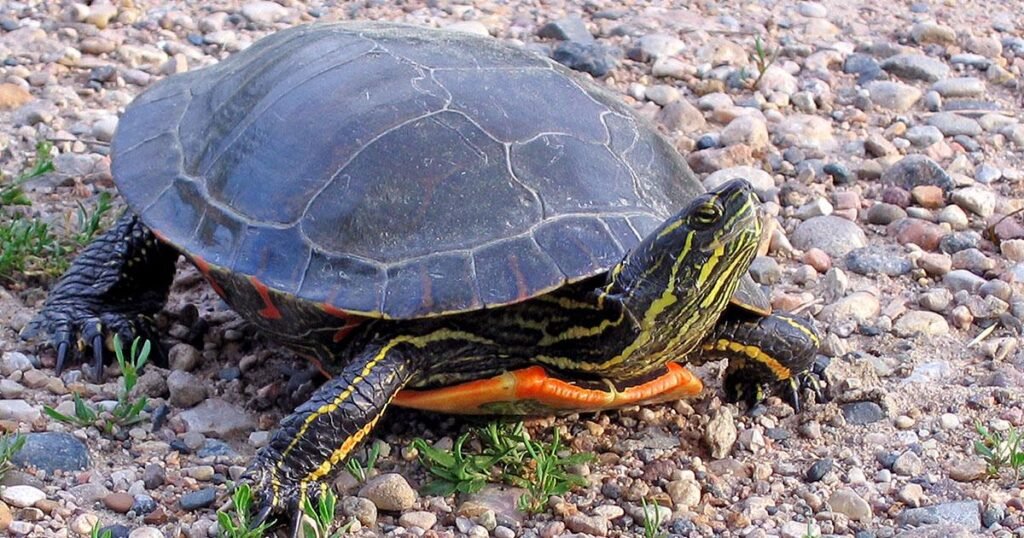
The painted turtle is a charming and widely known freshwater turtle species native to North America. Its striking look and ease of care have made it a popular choice among reptile enthusiasts as a pet.
Painted turtles show a distinctive and eye-catching appearance. They usually measure between four to 10 inches in length, with females being slightly larger than males. The most prominent feature of their appearance is their colorful shell, or carapace, which is usually dark green to black and adorned with vibrant red or yellow markings.
These markings can change among individuals, giving each painted turtle a unique and attractive appearance. Their skin is also colorful, often having bright red or orange markings, and their legs are adorned with yellow stripes.
2. Red-eared Sliders
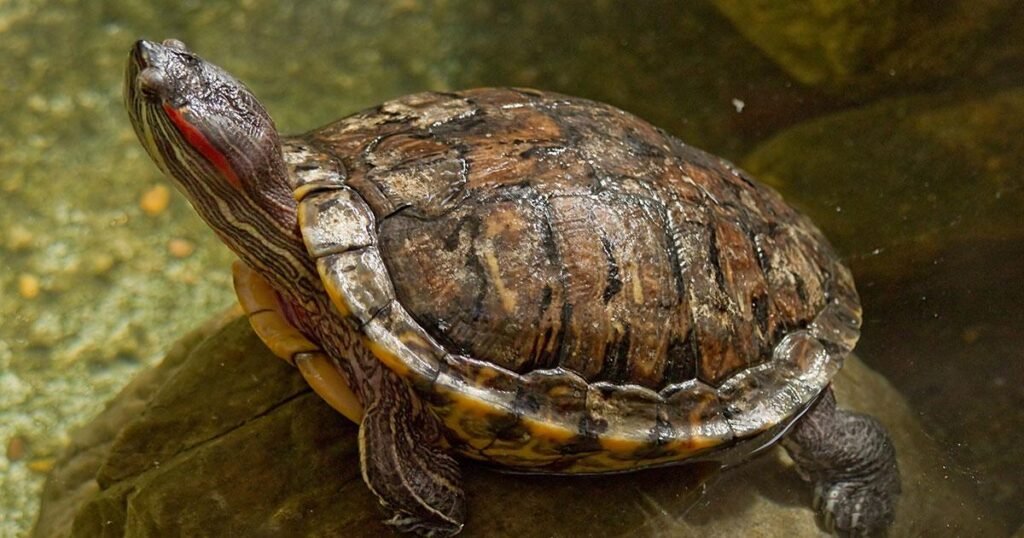
The red-eared slider is a well-known and unique pond turtle that many people keep as pets. The name comes from the bright colors it has on its shiny, smooth shell, which has clear red marks on either side of its head, near its eyes. Usually, it gets to be eight to twelve inches long. Its body is mostly olive to brownish-green with yellow stripes.
Red-eared sliders can eat almost anything, so feeding them is pretty easy. Their diet includes a range of aquatic plants, insects, small fish, and commercial turtle pellets. For their health and growth, it’s important to give them balanced food.
Keeping clean is very important for their health. To keep the fish healthy, you need to clean the tank often, get rid of any food that hasn’t been eaten, and give them clean, dechlorinated water.
Red-eared sliders also live a long time; they usually last 20 to 30 years or more. People who want to own a business should be ready to make a long-term investment. Also, it’s important to check the local rules because they might have rules about who can own red-eared sliders, especially in places where they are considered alien species.
3. Map Turtle

There are many kinds of map turtles, but one thing they all have in common is the raised aspects of their shell that look like the lines on a map.
These turtles need deep water in their surroundings. They tend to go to deeper water when they are feeling stressed to get a sense of safety and security. Without this room, they can experience a lot of stress that can cause far-reaching health problems.
Stress often comes from too much handling, so it’s best to leave them alone unless it is truly necessary to handle them. Caring for these turtles includes cleaning and maintaining their habitat and providing access to clean food and water.
4. Land-Loving Tortoises
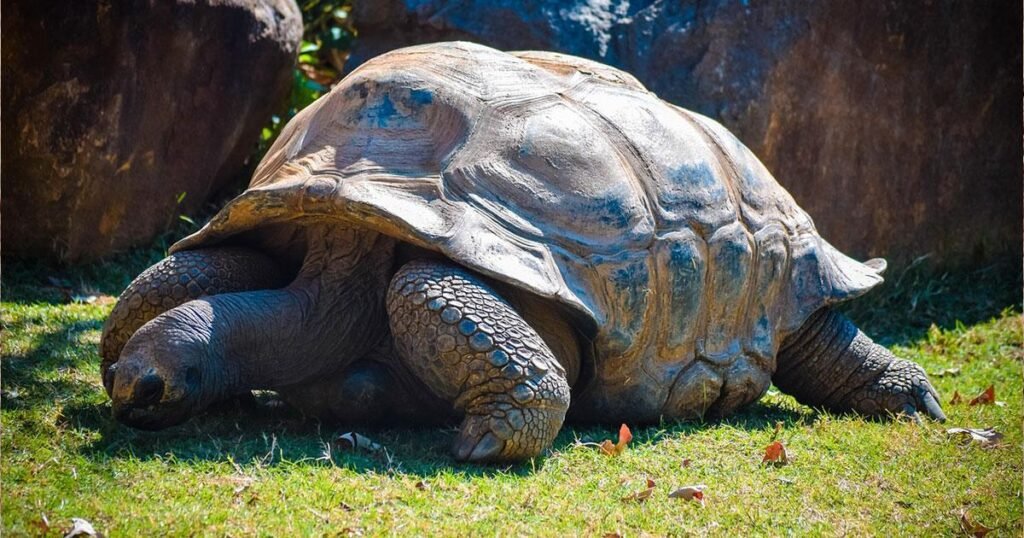
For 15-year-olds with a passion for land-dwelling reptiles, tortoises might be the right fit. Tortoises differ from turtles in that they mainly live on land and have feet built for walking on solid ground rather than swimming. The Russian Tortoise and the Sulcata Tortoise are two notable choices in this category.
The Russian Tortoise, a smaller species, is well-suited for indoor spaces with access to a sunny spot for basking. These tortoises are known for their hardy nature and can adapt to different climates. On the other hand, the Sulcata Tortoise is one of the largest tortoise species, needing substantial outdoor space. If you have a spacious backyard and a warm environment, the Sulcata Tortoise could be a fascinating addition to your family.
5. Eastern Box Turtles as Pets
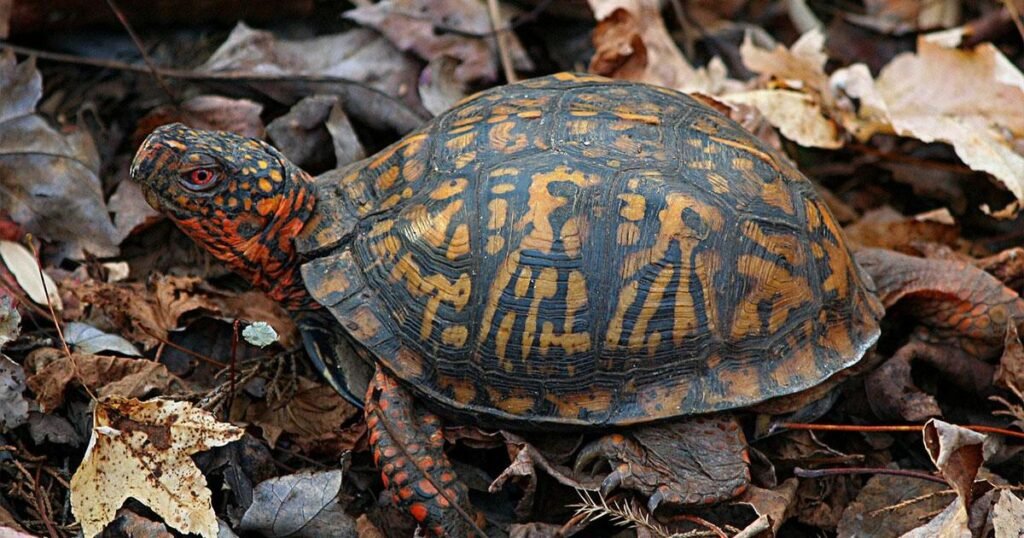
When considering a box turtle as a pet, it’s important to understand their specific care requirements. These turtles are terrestrial, meaning they spend most of their time on land, but they also need access to fresh water for drinking and washing.
Feeding an eastern box turtle means offering a varied diet. They are omnivorous, so their menu should include a mix of vegetables, fruits, insects, worms, and even the odd small vertebrates like a pinky mouse. It’s crucial to provide a calcium supplement to keep their shell healthy.
For their well-being, it’s important to keep the right temperature and humidity levels. These turtles expect humidity levels of 60 to 80% and may flourish at temperatures between 70 and 85 degrees Fahrenheit. It is crucial to give them a sufficient substrate and a place to escape from severe weather.
6. Wood Turtle
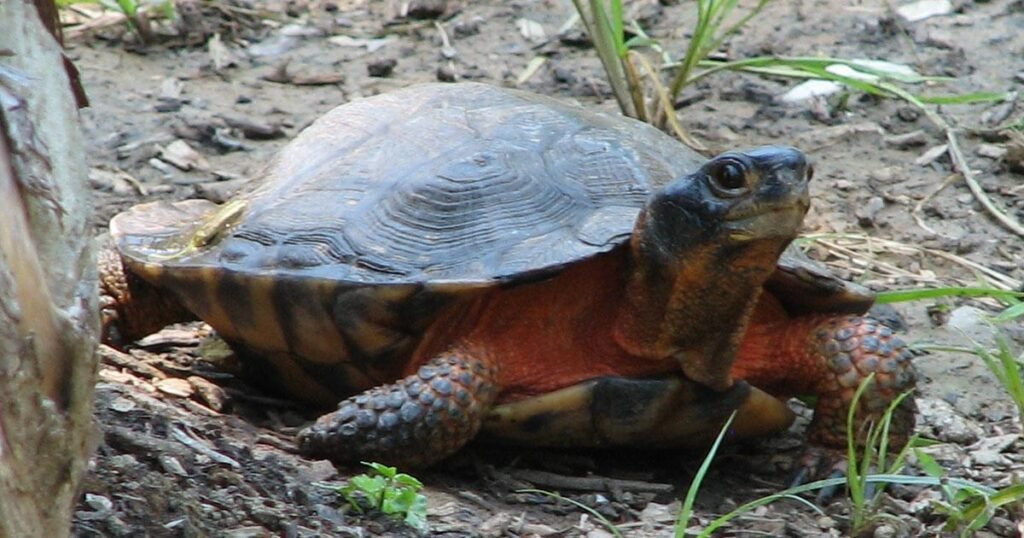
The wood turtle, a charming and unique species, is native to the northeastern United States and parts of Canada. Recognizable by its striking appearance and engaging behavior, it is rarely kept as a pet by reptile enthusiasts.
Wood turtles have a distinctive appearance with a dark, domed shell, usually measuring around 6 to 8 inches in length. Their shells show a mosaic-like pattern of concentric rings and radiating lines, often resembling a piece of artwork. These animals’ limbs are sturdy and suited for terrestrial living, and their coloration varies from brown to dark olive. Their head features a unique yellowish patch behind each eye, and they have bright orange or red eyes.
Caring for a wood turtle as a pet takes careful attention to their natural habitat and behaviors. These turtles thrive in environments with a mix of woodlands and freshwater streams, so replicating such conditions is important.
7. Reeves Turtle
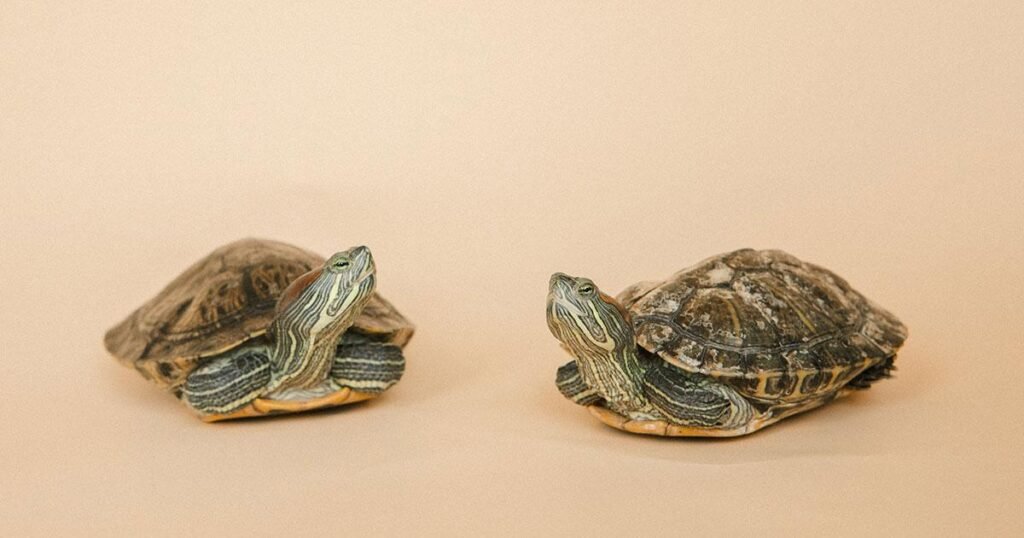
Imagine a little creature with a built-in backpack – that’s the Reeves Turtle! They’ve got a hard shell on their back that acts like a superhero shield, keeping them safe and stylish.
Reeves Turtles love to chill in ponds and slow-moving streams. It’s like they’ve got a VIP pass to the coolest water parties in town. These little foodies enjoy a spread of insects, small fish, and aquatic plants. They’re like the gourmet cooks of the turtle world!
Guess what? Reeves Turtles have been around for ages, way before computers and video games. They’re like the time-traveling rockstars of the turtle kingdom. We can be heroes too! Help out our turtle friends by keeping their homes clean. Imagine being the superhero of nature – it’s the coolest job ever!
Read More: A Comprehensive Guide To Reeves Turtle Care & Species Profile
8. Musk Turtle
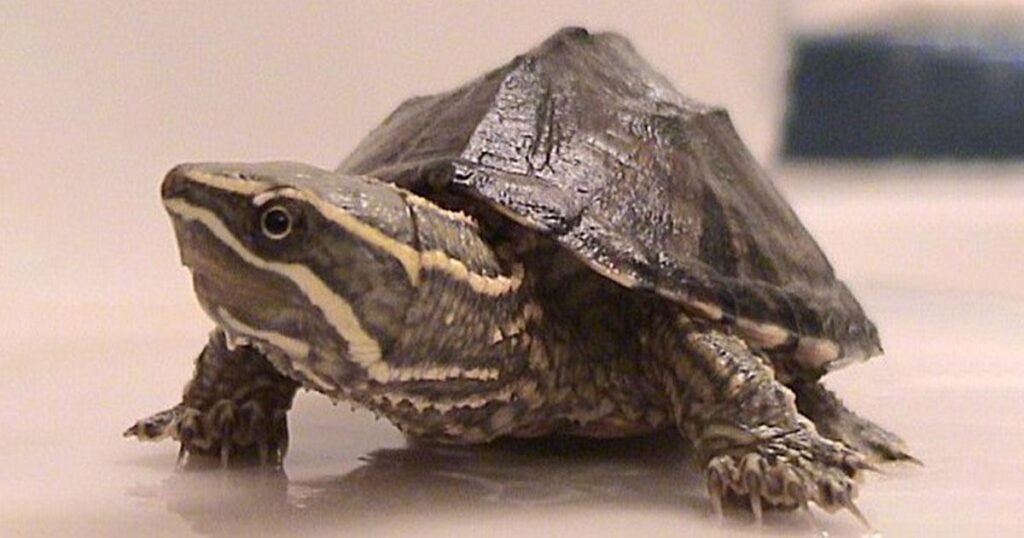
Native to North America, the musk turtle is a small yet interesting species of reptile. This turtle is famous for its striking look and pungent scent. Although it’s less popular as a pet than some other turtles, it has charm for people who value its eccentric nature.
Musk turtles are relatively small, usually measuring around three to five inches in length. They have smooth, dark-colored bodies with a low dome shape. Their skin is dark and generally adorned with a series of yellowish or white stripes on each side, which may vary among individuals. These turtles also have webbed feet and a small, pointed head. Their most distinctive trait is the musk gland located near their cloaca, which emits a strong odor when they feel threatened or stressed.
Turtle Care Essentials
Now that you have a glimpse into the diverse world of pet turtles let’s discuss some important care tips to ensure your new reptilian friend thrives in its environment.
- Habitat: Creating the right habitat is important for the well-being of your pet turtle. Different species have varying habitat requirements, so be sure to study and set up an environment that mimics their natural surroundings. This includes giving the right temperature, lighting, and hiding spots.
- Diet: Turtles have specific dietary needs, and it’s important to provide a well-balanced and varied diet. Commercial turtle pellets, leafy greens, and rare treats like insects or fruits are usually part of a healthy turtle diet. Consult with a vet to determine the best diet for your particular turtle species.
- Health Checkups: Regular veterinary checkups are important to monitor your turtle’s health. Find a veterinarian with experience in treating reptiles, and schedule routine checkups to ensure your turtle stays happy and healthy.
- Interaction: While turtles may not be as affectionate as some other pets, they do enjoy interaction and can know their owners. Spend time observing and interacting with your turtle, and you’ll be surprised at the unique personality traits each individual may display.
- The Educational Aspect of Turtle Ownership: Owning a pet turtle is not just about having a fascinating companion; it’s also a chance for learning and personal growth. Taking on the responsibility of caring for a living being teaches important life skills such as patience, commitment, and empathy. Researching and understanding the specific needs of your turtle can be an educational experience that goes beyond the classroom.
By actively sharing in the care of your pet turtle, you’ll gain insights into biology, ecology, and responsible pet ownership. Additionally, documenting your turtle’s behavior, growth, and habits can turn into a fun and useful project.
Read More: The Ultimate Guide To Cumberland Slider Turtle Care
FAQs
What are the coolest types of pet turtles?
That depends on what you like! Do you want an active swimmer who loves relaxing in the sun? Check out red-eared sliders, with their bright red stripes and playful attitudes. Prefer a smaller, land-loving pal? Eastern box turtles are cute slowpokes with hinged doors (their shells, that is!). There’s even the unique African side-neck turtle, which bends their neck like a snake to peek around!
How big do pet turtles get?
Turtle sizes vary greatly! Some, like painted turtles, stay around 10 inches, while giants like leatherback sea turtles can reach over 8 feet! Choose a species that fits your room and commitment level.
What do turtles eat?
Most types of pet turtles are omnivores, meaning they eat both plants and animals. Depending on the species, their food might include leafy greens, fruits, vegetables, insects, worms, or even small fish. Ask a pet store expert about the unique needs of your chosen turtle.
Do turtles need a lot of space?
Absolutely! Turtles need enough room to move, explore, and bask in the sun. The exact size will depend on the species, but usually, the bigger, the better. Remember, these little guys can live for decades, so think long-term when building their home.
How do I take care of a pet turtle?
Caring for a turtle includes setting up a proper enclosure with both land and water areas, keeping it clean and at the right temperature, feeding them a healthy diet, and giving them hiding spots and things to climb on. It’s also important to wash your hands after touching them and never paint their shells.
Can turtles be nice pets?
While not as cuddly as a cat or dog, turtles can be surprisingly friendly and involved! Some species, like red-eared sliders, enjoy basking with their humans, and many learn to know their feeders. Remember, patience and gentle treatment are key to building trust with your shelled friend.
Where can I get a pet turtle?
Responsible pet ownership starts with picking the right source! Avoid getting turtles from impulse sales or unknown sellers. Opt for reliable breeders, animal shelters, or rescue organizations that ensure the turtles’ health and well-being.
Are turtles a lot of work?
Owning a pet is always a duty, and turtles are no exception. They require regular feeding, cleaning, and tank upkeep. Be prepared to commit time and effort to keeping your turtle healthy and happy.
Can I take my pet turtle outside?
Sure, but be careful! Supervise your turtle at all times to avoid escapes, predators, or dangerous sunlight. Stick to safe, enclosed areas like your garden and provide plenty of shade and access to water.
What are some fun facts about turtles?
Did you know turtles have been around for over 200 million years? That’s older than dinosaurs! They can also hold their breath for hours, and some species even change their shell color based on their mood!
Conclusion
Bringing a pet turtle into your life may be an exciting and gratifying experience. From small types of pet turtles, the world of pet turtles offers a diverse range of choices to suit your tastes and lifestyle. Remember to study the specific needs of the turtle species you choose, create a suitable habitat, and enjoy the educational journey that comes with being a responsible turtle owner. With the right care and attention, your pet turtle can become a lifelong friend, bringing joy and wonder to your teenage years and beyond.
